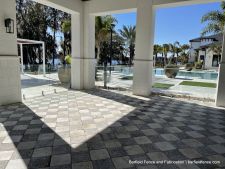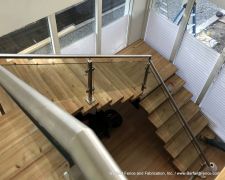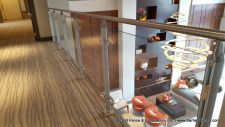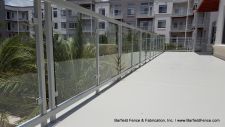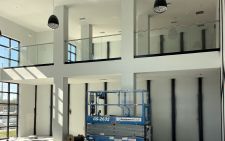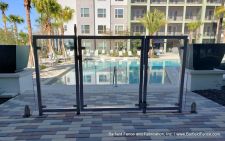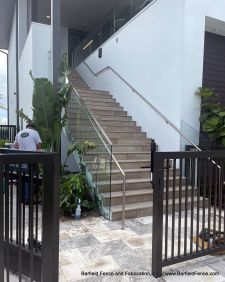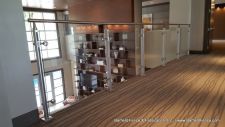Glass has been an essential component of architecture and construction for centuries, and it is widely used today in modern building design. Glass is a versatile material that has numerous benefits, including allowing natural light into buildings, providing insulation, and creating a visually appealing aesthetic. As such, it has become a popular choice for architects and builders alike. In this article, we will discuss the different types of glass commonly used in construction.
Annealed Glass
Annealed glass, also known as float glass, is the most common type of glass used in construction. It is produced by cooling molten glass slowly to relieve internal stresses, and it is typically used in windows and doors. Annealed glass is easy to cut and can be shaped to fit any size or shape required. It is also cost-effective and widely available, making it a popular choice for builders.
However, annealed glass is not as strong as other types of glass and is prone to breakage. When broken, it shatters into large, dangerous pieces, which can pose a significant risk to occupants. As such, it is not recommended for areas where safety is a concern.
Toughened Glass
Toughened glass, also known as tempered glass, is a type of glass that is stronger and safer than annealed glass. It is produced by heating annealed glass to a high temperature and then rapidly cooling it. This process creates a glass that is up to five times stronger than annealed glass and is designed to break into small, harmless pieces when shattered.
Toughened glass is commonly used in areas where safety is a concern, such as in doors and windows, balustrades, and shower screens. It is also heat-resistant and can withstand temperatures of up to 250°C. However, toughened glass is more expensive than annealed glass and cannot be cut or modified once it has been toughened.
Laminated Glass
Laminated glass is made up of two or more layers of glass with a layer of plastic between them. The plastic layer holds the glass together if it is shattered, preventing it from breaking into dangerous pieces. As such, laminated glass is commonly used in areas where safety is a concern, such as in skylights, balconies, and glass floors.
Laminated glass is also effective at reducing noise transmission and can provide insulation against UV radiation. However, it is more expensive than annealed glass and may be heavier and thicker than other types of glass.
Insulated Glass
Insulated glass is also known as double-glazed glass. It is made up of two or more layers of glass with a sealed air gap between them. The air gap acts as an insulator, reducing the amount of heat that can pass through the glass. As such, insulated glass is commonly used in areas where insulation is a concern, such as in windows and doors.
Insulated glass is also effective at reducing noise transmission and can provide insulation against UV radiation. However, it is more expensive than annealed glass and may be heavier and thicker than other types of glass.
Low-E Glass
Low-E glass is also known as low-emissivity glass. It is coated with a thin layer of metal oxide, which reflects heat back into the room. This coating reduces the amount of heat that can pass through the glass, making it an effective insulator. Low-E glass is commonly used in areas where insulation is a concern, such as in windows and doors.
Low-E glass is also effective at reducing the amount of UV radiation that can pass through the glass, which can help prevent furniture and fabrics from fading. However, it is more expensive than annealed glass and may be heavier and thicker than other types of glass.
In conclusion, there are numerous types of glass available for use in construction, each with its own strengths, weaknesses, and uses.
Here is a list of websites that contain information on different types of glass and their properties:
- GlassOnWeb.com – This comprehensive site covers various glass types like annealed, tempered, laminated, insulated, and specialty glasses. It explains their manufacturing processes, characteristics, and applications.
- GlassAssociationNorthAmerica.org – The Glass Association of North America’s site provides technical resources, standards, and educational materials on various glass types used in construction.
- GlassMagazine.com – An online magazine that covers news, trends, and developments in the glass industry, including information on new glass products and technologies.
- GlassGuides.com – A comprehensive resource that provides guides and information on various glass types, their properties, and their applications in different industries.
- GlassInformationPortal.com – A portal that serves as a central resource for information on various glass types, their characteristics, and their applications in industries like construction, automotive, and electronics.
These websites should provide you with a good understanding of glass available and their applications across various industries.



